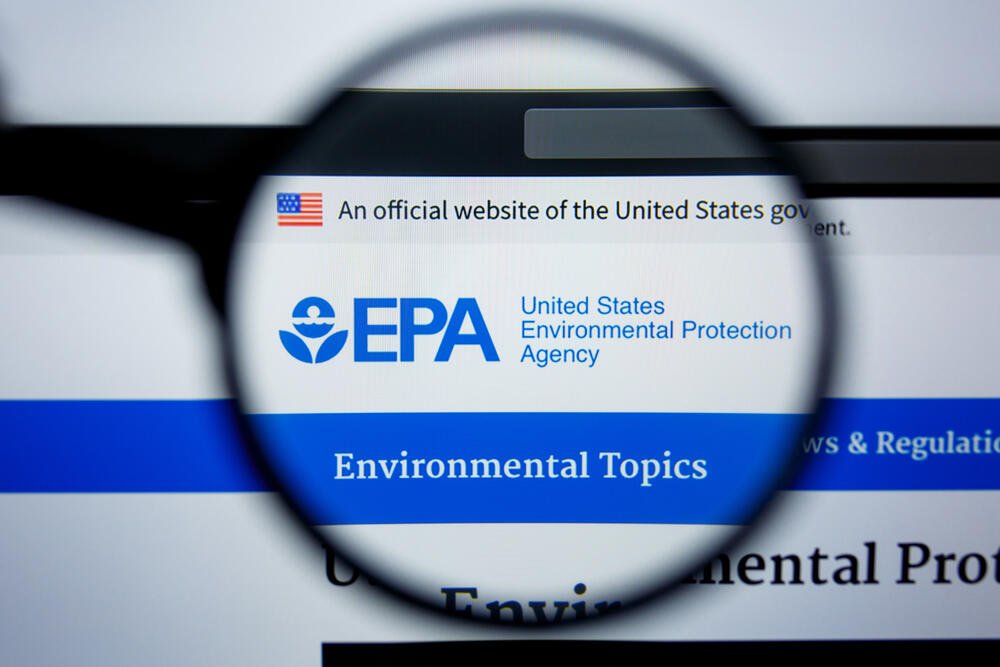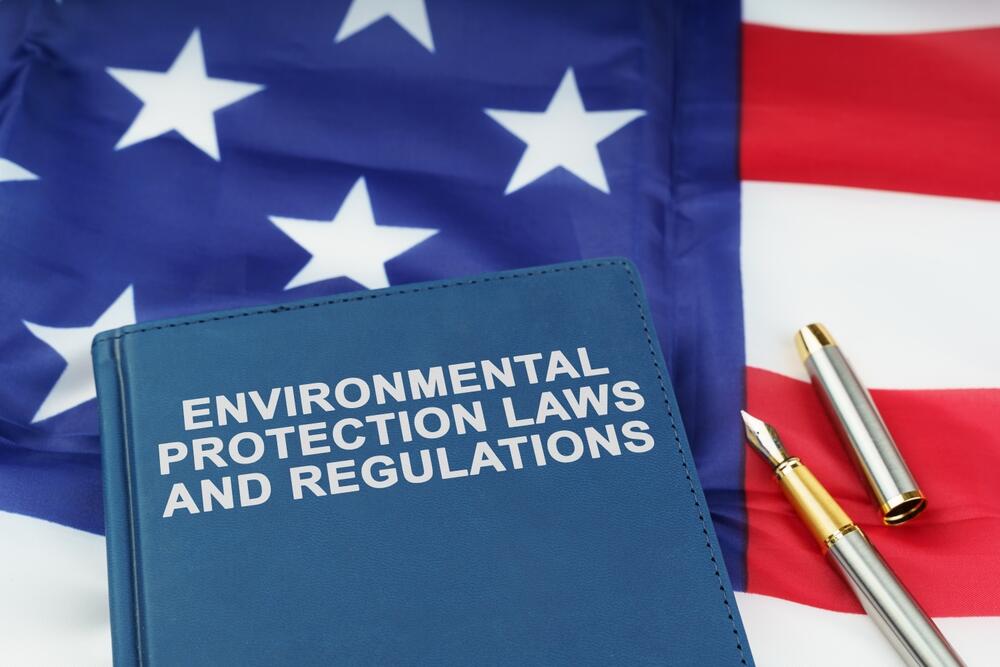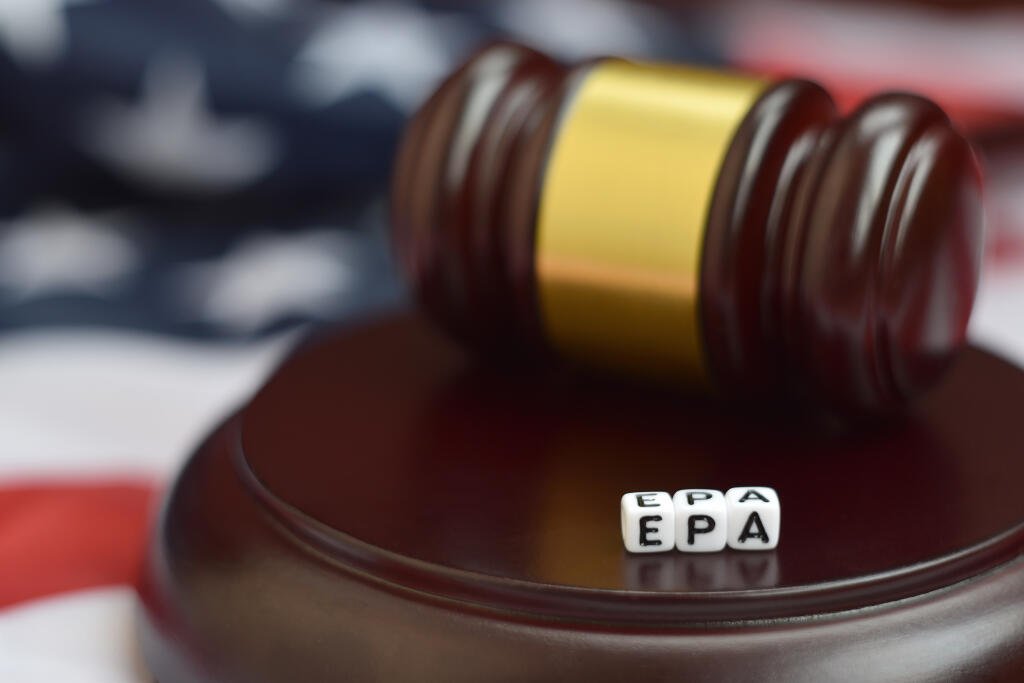- What Does the EPA Mean?
- Why Was the EPA Created?
- The EPA's Mission
- What the EPA Does to Accomplish the Mission
- Protecting human health
- Protecting environmental health
- Supporting the economy
- Supporting rural communities
- Advancing scientific knowledge
- Some EPA Programs
- EPA Regulations and Laws
- How Does the EPA Monitor Environmental Quality?
- What the EPA Doesn't Do
- Key Takeaway

The Environmental Protection Agency (EPA) is a separate government agency that is in charge of human and environmental health by monitoring and regulating air, water, and land quality.
One of the most recognizable federal entities is also one of the least understood. The EPA has so many different programs and projects that it can be hard to figure out what they all do. This article will give you an outline of the essential information concerning the EPA you need to know.
What Does the EPA Mean?
The Environmental Protection Agency (EPA) is responsible for drafting and enforcing regulations for pollution management to safeguard human and environmental health.
The agency is responsible for all federal efforts to stop climate change by reducing the number of greenhouse gas emissions, including setting standards for renewable energy and fuel efficiency for cars and trucks.
Additionally, the agency works with state and local governments to help develop resiliency plans to prepare for the effects of climate change. The firm also researches and develops solutions to environmental issues like sustainable agriculture, conservation, and wildlife refuges.

Why Was the EPA Created?
The EPA was established in 1970 after the passage of the Clean Air and Water Acts.
These acts aimed to create a federal regulatory agency to protect the environment and public health. Prior to the EPA, environmental issues were handled by the states with minimal federal involvement.
Unfortunately, this led to a patchwork of different rules across the country and significant differences in how well they were followed.
In particular, legislation regarding air pollution might vary greatly from one state to the next and even within the same state.
The creation of the EPA was a significant shift in the U.S. government's handling of domestic environmental issues. The EPA was in charge of enforcing the new federal clean air and water standards, primarily by fining polluters and demanding them make amends for their infractions.
The EPA's Mission
Safeguarding human health, enhancing environmental quality, and promoting sustainable development are central to the United States Environmental Protection Agency (EPA)'s work.
As part of our purpose, we strike a balance between people's health and the environment's protection, and the demands of local businesses and neighborhoods.
The EPA considers people's benefits from living in healthy environments and working with others to achieve common goals.
They also aim to preserve public health and the environment by doing the following:
- Reducing risks from hazardous waste
- Cleaning up contaminated sites
- Conserving energy
- Regulating chemicals
- Ensuring food safety
- Providing cleaner water and air
- Preventing disease
- Improving efficiency
The EPA believes every person deserves safe drinking water, clean air to breathe, fishable streams, and places where nature thrives.
Our success depends upon partnerships among federal agencies, states, local governments, tribes, industries, farmers, ranchers, consumers, scientists, universities, and many others.
What the EPA Does to Accomplish the Mission
The Environmental Protection Agency ensures that we have clean air, clean water, and healthy land every day. They accomplish this goal in several different ways:
Protecting human health
The EPA works to protect human health by enforcing federal regulations that monitor and control air, water, and land pollution.
They introduce new regulations to improve public health when necessary and monitor and report on the health effects of current pollution levels.

Protecting environmental health
The EPA also works to protect the environment by monitoring and controlling the impact of pollution on ecosystems.
They oversee the use of pesticides, which can severely impact the environment, and they control the amount of water that can be dumped into natural waterways. They also assist communities facing environmental emergencies, such as the recent hurricanes in Puerto Rico and the U.S. Virgin Islands.
Supporting the economy
The EPA works with businesses to create regulations that support a strong economy. They also provide funding for businesses to help them transition to more environmentally-friendly practices.
Supporting rural communities
The EPA supports rural communities by assisting with environmental regulations and supporting local environmental efforts.
Advancing scientific knowledge
Finally, the EPA is responsible for enforcing federal laws and regulations related to pollution and public health, providing financial and scientific assistance to local communities, and managing our nation's land and water resources. There are several vital programs under each of these responsibilities.
Some EPA Programs
The Environmental Protection Agency (EPA) manages some initiatives designed to improve energy efficiency, environmental stewardship, sustainable development, air and water quality, and pollution control. Among these offerings are:
- The EPA's Safer Choice program helps consumers, businesses, and buyers find safer items for human health and the environment. This program involves minimizing, eliminating, or avoiding pollution at its source.
- The WaterSense Program promotes water conservation through high-efficiency plumbing fixtures and lawn sprinklers.
- The Environmental Cleanup and Remediation program grants states, tribes, and local organizations funds to clean up contaminated lands. In some cases, the program will also conduct cleanup activities.
- The National Estuary Program supports the preservation and restoration of estuaries across the country, including the Chesapeake Bay, Florida Bay, Great Lakes, San Francisco Bay, and the Great Barrier Reef.
- The Sustainable Communities Program aims to increase the resilience of communities in the face of climate change, promote sustainable economic growth, and strengthen local capacity to implement environmental programs.
EPA Regulations and Laws
Since 1970, the agency has enacted many federal regulations and laws. Below are some of the most significant:
- The Clean Air Act was enacted in 1963 to regulate transportation emissions, power plants, refineries, industrial facilities, and emissions from hazardous substances such as asbestos and lead.
- The Clean Water Act was created in 1972 in an effort to enhance the water quality in the U.S. The law set pollution limits and provided grants for water pollution reduction.
- The Toxic Substances Control Act(TSCA) was approved in 1976 to control harmful chemicals and pesticides made from synthetic materials to prevent accidental poisoning.
- The Superfund was enacted in 1980 and created a fund to clean up hazardous waste sites. The EPA compiles and disseminates data on pollutants and health concerns associated with superfund sites.
- The Solid Waste Disposal Act sets national standards for managing solid waste.
- Safe Drinking Water Act regulates drinking water quality and protects public health.

How Does the EPA Monitor Environmental Quality?
Monitoring pollution is at the core of the EPA's mission.
The EPA estimates that 70% of monitored waterways are considered "impaired," meaning they are too polluted to support their aquatic ecosystems.
As a result, they issue regulations on allowable emissions from specific sources like coal-fired power plants and other industrial facilities.
The EPA also uses a combination of research, monitoring, and data collection techniques to track environmental quality.
EPA's research is driven by requests from Congress or the President and the agency's initiatives. They operate more than 80 research laboratories across the United States.
These labs study everything from the toxicity levels of pesticides to the effects of climate change on human health.
With more than 10,000 employees in its research labs, the EPA is one of the largest research institutions in the country. The EPA also relies on data collected by state and local governments. The agency uses this data to make evidence-based judgments about environmental policy.
The EPA monitors air quality through hundreds of nationwide air quality monitoring stations. The EPA publishes the results of these monitoring stations on its website to track federal and local efforts to reduce pollution.
The agency also runs a voluntary "adopt a monitoring station" program where citizens can receive air pollution alerts from their local air quality station.
The EPA can set future environmental standards and practices for local, state, and federal programs by conducting ecological research.
This environmental monitoring captures the current state of the environment. It informs policies, allowing the EPA to set future environmental standards and practices for local, state, and federal programs in the U.S. and worldwide.
What the EPA Doesn't Do
The EPA cannot respond to every pollution event or issue that arises.
The agency has limited resources and can only respond to the most severe threats to public health. For example, the EPA does not regulate every type of hazardous waste.
The agency also does not manage radioactive waste, although it does regulate some low-level radioactive substances.
The EPA also does not set air quality standards for every pollutant. Instead, the firm prioritizes funding for the most severe environmental issues with a limited budget.
Another thing to note is that the EPA does not set or enforce drinking water standards.
Drinking water is managed by state and local government agencies, with oversight from the EPA. However, the EPA does not regulate every type of water contamination, such as groundwater contamination by pesticides.

Key Takeaway
The EPA plays a critical role in protecting public health and the environment, but it can be easy to misunderstand the agency's role and responsibilities.
To understand the EPA better, knowing what the EPA does and how it accomplishes its objectives is crucial. Take into account that the EPA is just one of many environmental agencies tasked with protecting the environment.
While the EPA may be the most well-known environmental agency, it is only one part of a more extensive network of agencies working towards a common goal: a healthy environment for all.
Therefore, as one of the biggest U.S.-based international motor freight carriers, A1 Auto Transport is also responsible for protecting the environment. We have taken and continue to take more steps to prevent the misuse or contamination of our planet's natural resources, which you can learn more about in our green initiatives.






 Share on Facebook
Share on Facebook Share on LinkedIn
Share on LinkedIn Share on Twitter
Share on Twitter




 Google
Google  Instagram
Instagram  YellowPages
YellowPages  Trustpilot
Trustpilot 




